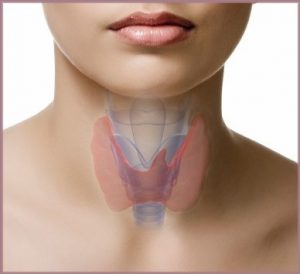Thyroidectomy is the removal of all or part of your thyroid gland. Your thyroid is a butterfly-shaped gland located at the base of your neck. It produces hormones that regulate every aspect of your metabolism, from your heart rate to how quickly you burn calories.

Thyroidectomy is used to treat thyroid disorders, such as cancer, noncancerous enlargement of the thyroid (goiter) and overactive thyroid (hyperthyroidism).
How much of your thyroid gland is removed during thyroidectomy depends on the reason for surgery. If only a portion is removed (partial thyroidectomy), your thyroid may be able to function normally after surgery. If your entire thyroid is removed (total thyroidectomy), you need daily treatment with thyroid hormone to replace your thyroid’s natural function.
Original article from Mayoclinic.com
- Thyroid cancer. Cancer is the most common reason for thyroidectomy. If you have thyroid cancer, removing most, if not all, of your thyroid will likely be a treatment option. Noncancerous enlargement of the thyroid (goiter). Removing all or part of your thyroid gland is an option if you have a large goiter that is uncomfortable or causes difficulty breathing or swallowing or, in some cases, if the goiter is causing hyperthyroidism.
- Overactive thyroid (hyperthyroidism). Hyperthyroidism is a condition in which your thyroid gland produces too much of the hormone thyroxine. If you have problems with anti-thyroid drugs and don't want radioactive iodine therapy, thyroidectomy may be an option.
- Bleeding
- Infection
- Airway obstruction caused by bleeding
- Permanent hoarse or weak voice due to nerve damage
- Damage to the four small glands located behind your thyroid (parathyroid glands), which can lead to hypoparathyroidism, resulting in abnormally low calcium levels and an increased amount of phosphorus in your blood
Surgeons perform thyroidectomy during general anesthesia, so you won't be conscious during the procedure. The anesthesiologist or anesthetist gives you an anesthetic medication as a gas — to breathe through a mask — or injects a liquid medication into a vein.
The surgical team places several monitors on your body to help make sure that your heart rate, blood pressure and blood oxygen remain at safe levels throughout the procedure. These monitors include a blood pressure cuff on your arm and heart-monitor leads attached to your chest.
Once you're unconscious, the surgeon makes a small incision in the center of your neck or a series of incisions some distance from the thyroid, depending on the surgical technique he or she uses. All or part of the thyroid gland is then removed, depending on the reason for the surgery. If you're having thyroidectomy as a result of thyroid cancer, the surgeon may also examine and remove lymph nodes around your thyroid. Thyroidectomy usually takes several hours.
There are three main approaches to thyroidectomy:- Conventional thyroidectomy involves making an incision in the center of your neck to directly access your thyroid gland.
- Endoscopic thyroidectomy uses smaller incisions in the neck. Surgical instruments and a small video camera are inserted through the incisions. The camera guides your surgeon through the procedure.
- Robotic thyroidectomy is performed either through incisions in the chest and armpit or via an incision high in the neck. The robotic approach allows a thyroidectomy to be performed while avoiding an incision in the center of your neck.
After surgery, you're moved to a recovery room where the health care team monitors your recovery from the surgery and anesthesia. Once you're fully conscious, you'll be moved to a hospital room.
You may have a drain under the incision in your neck. This drain is usually removed the morning after surgery.
After a thyroidectomy, you may experience neck pain and a hoarse or weak voice. This doesn't necessarily mean there's permanent damage to the nerve that controls your vocal cords. These symptoms are often temporary and may be due to irritation from the breathing tube (endotracheal tube) that's inserted into your windpipe (trachea) during surgery, or as a result of nerve irritation caused by the surgery.
You'll be able to eat and drink as usual after surgery. Most people who have thyroidectomies remain in the hospital for about 24 hours.
When you go home, you can usually return to your regular activities, often within 10 days or so. Talk to your doctor about specific activity restrictions.